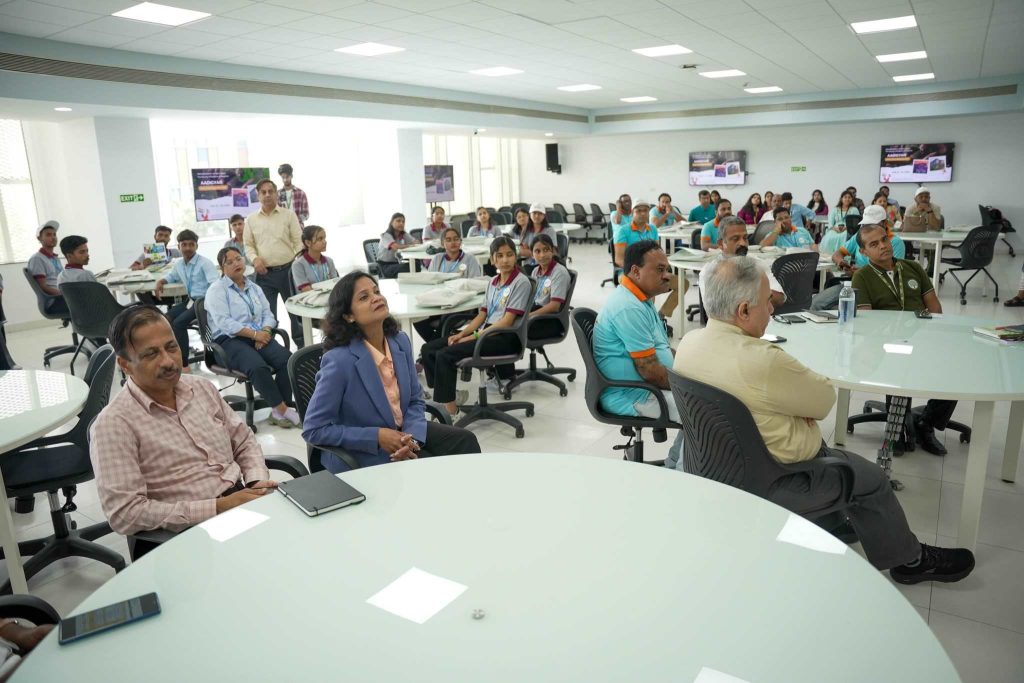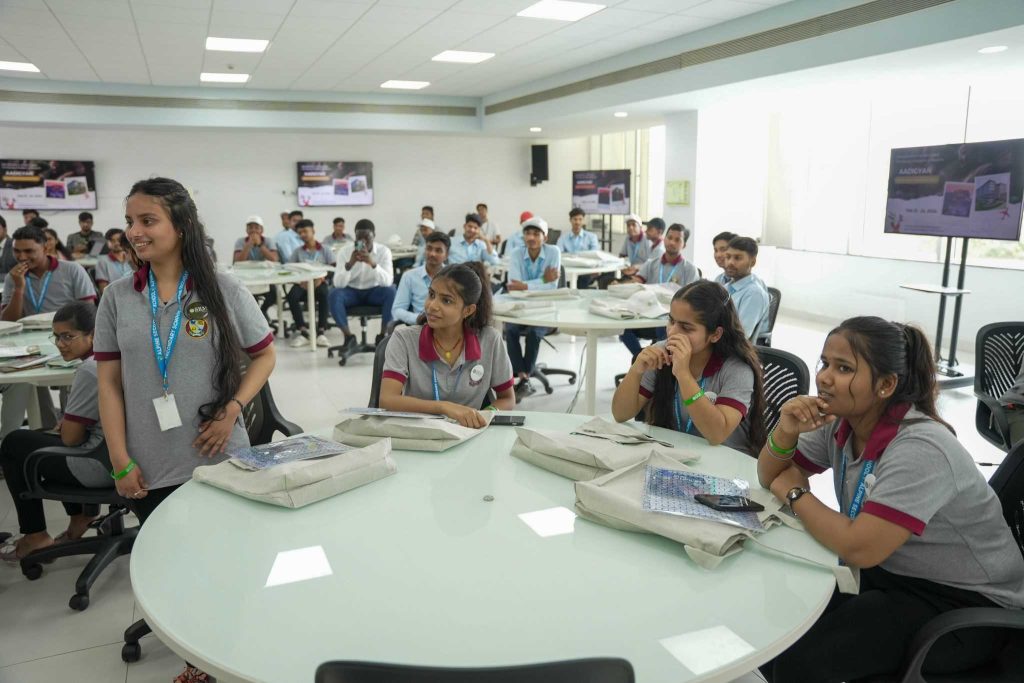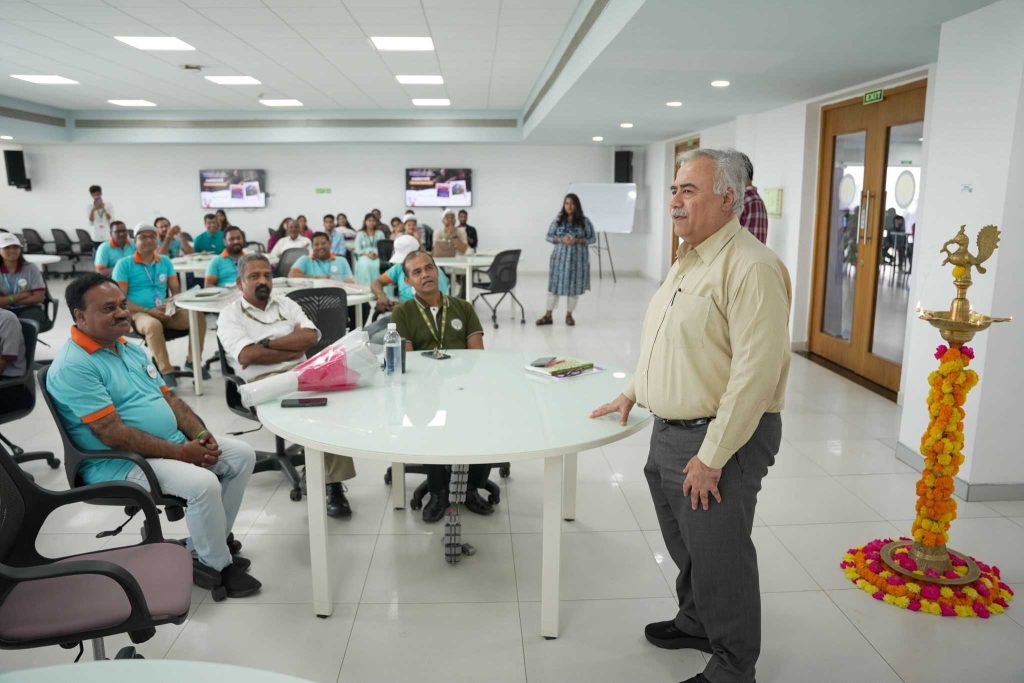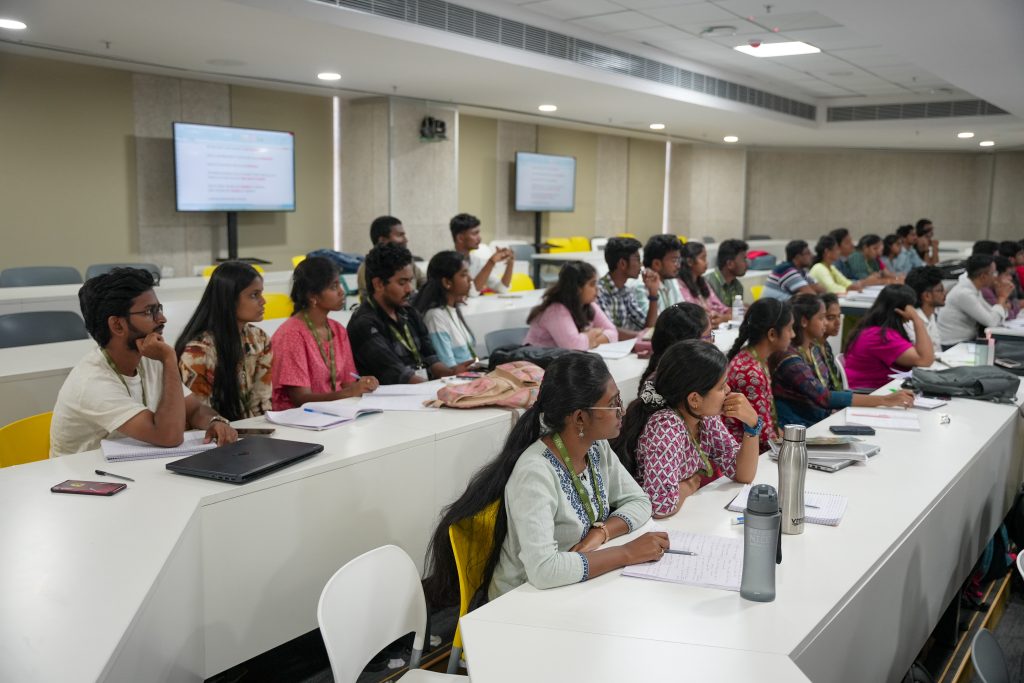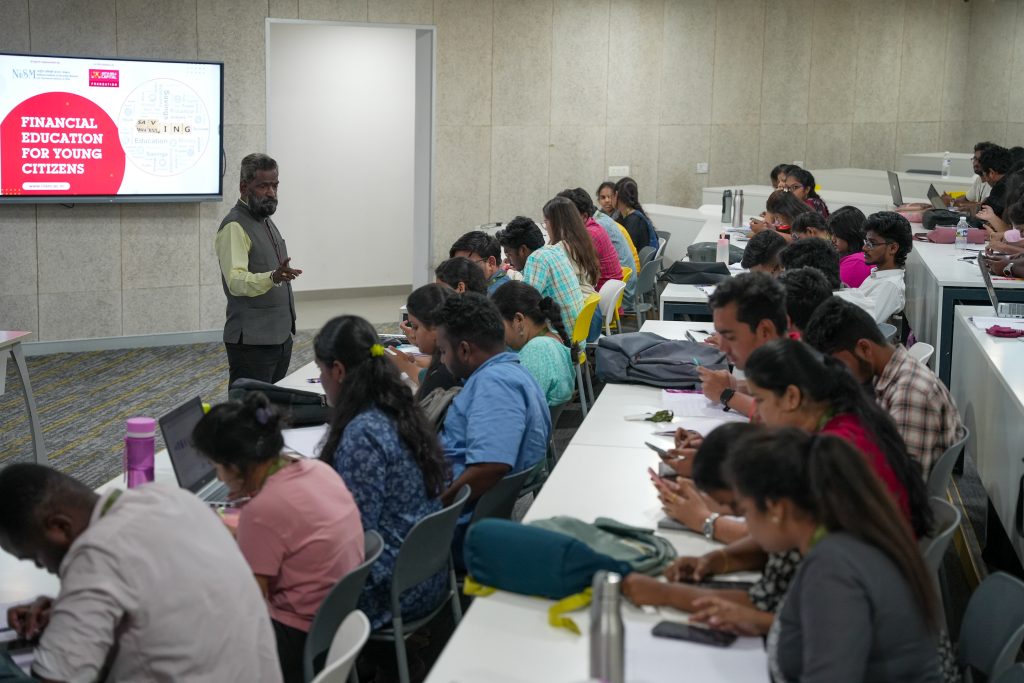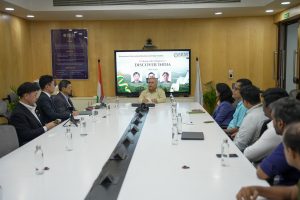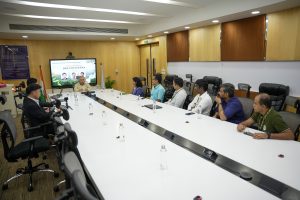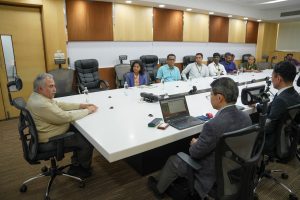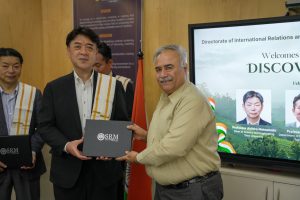Aadigyan: Connecting Cultures and Celebrating Diversity
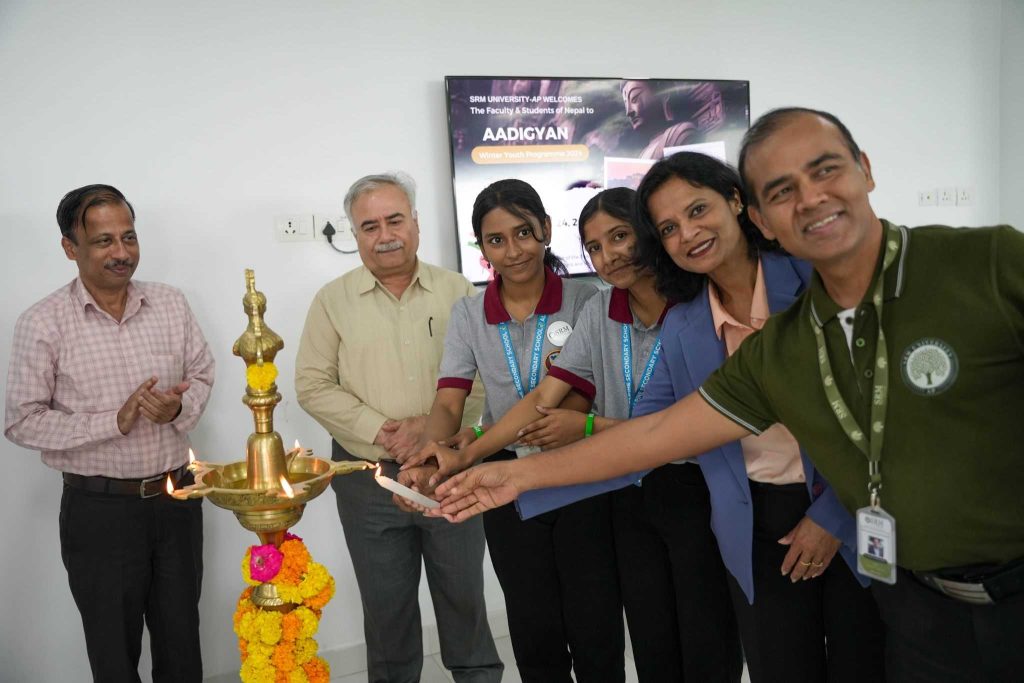
The Directorate of International Relations and Higher Studies (IR&HS) at SRM University-AP has organised Aadigyan Winter Youth Programme. The event is the varsity’s flagship initiative and is conducted to introduce International students and to familiarise them with the Indian culture, its history and lifestyle. This year the varsity hosted students and faculty from Alpine High School, Nepal. The event, which spanned over three days, saw students engage in the world of knowledge and innovation.
The induction featured Vice Chancellor, Prof. Manoj K Arora, Deans, Assistant and Associate Deans of the three schools, and Directors and other luminaries. The event highlights included insightful sessions on engineering, liberal arts, and a unique experimental workshop, “Walk with a Scientist”, that saw Prof. Jayaseelan Murugaiyan introduce the students to the vast diversity of flora and fauna on the campus.
The third day of the Aadigyan Youth Programme saw the students attend insightful sessions by luminaries such as Prof. A V S Kamesh, Professor Paari School; Mr Sidharth Shankar Tripathy, Director Entrepreneurship and Innovation; Ms Kriti Gopal Das, ISKCON and finally Ms Aditi Jain, Director-IR&HS.
- Published in Departmental News, IR-News, News
Young Investors Workshop for Management Graduates
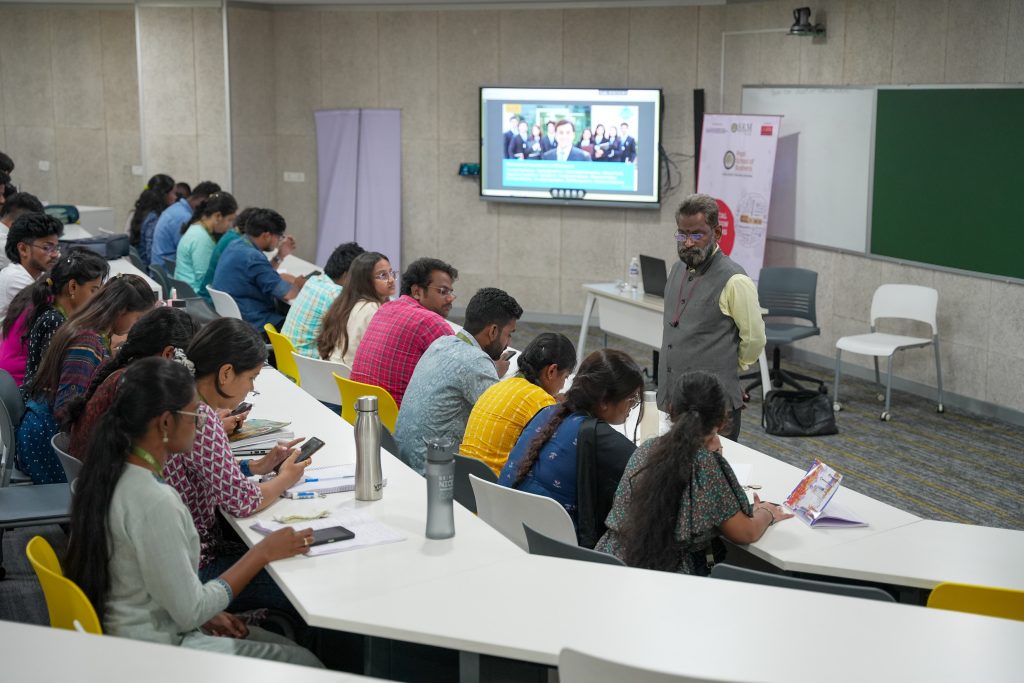
The Paari School of Business has organised a transformative two-day Young Investor Education Workshop on “Financial Education for Young Citizens” for MBA students on February 26-27, 2024, led by finance expert Dr Vijaya Kumar Chilukuri from NISM. The sessions covered diverse finance intricacies and career strategies. Certificates were awarded to participants who cleared the examination, adding value to their academic journey. A Pre-assessment and post-assessment were conducted, which helped students understand their learning journey. Dr Chilukuri’s expertise and his interactive sessions left a lasting impact on all the students, and they actively participated in learning many key concepts of savings and investments. These workshops conducted by the school align with SRM AP’s commitment to holistic education and student success.
- Published in Departmental News, News, Paari Current Happenings, paari-events
SRM University-AP Hosts Japanese Delegation for a Culturally Enriching Exchange
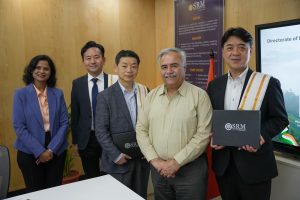 The Directorate of International Relations and Higher Studies recently welcomed distinguished delegations from Japan, the Land of the Rising Sun, for a fruitful academic and cultural exchange programme, “Discover India“.
The Directorate of International Relations and Higher Studies recently welcomed distinguished delegations from Japan, the Land of the Rising Sun, for a fruitful academic and cultural exchange programme, “Discover India“.
From February 21st to 24th, 2024, the university hosted Prof. Akihiro Matsumoto, Prof. Sho Yokota and Mr. Yutaka Kikuchi from Toyo University and Forum Engineering. Through interactive discussions and immersive sessions, the delegates gained valuable insights into Indian culture and traditions and promising opportunities for collaboration.
Discover India Programme is a transformative journey where innovation meets tradition. Witness the dawn of a new academic era, brimming with opportunities that promise to revolutionise our educational landscape. This enlightening gathering was more than a meeting of minds; it was a fusion of cutting-edge research and shared visions. The delegates engaged intimately with our esteemed faculty and brilliant research scholars from the Mechanical and Electrical and Electronics Engineering Departments, sparking dialogues that promise to kindle innovative research collaborations.
Their exploration of our state-of-the-art research facilities provided a window into the advanced realm of EV Research Technologies at SRM University-AP. The visit illuminated the potential for groundbreaking advancements in sustainable technology, reflecting our commitment to pioneering solutions for a greener future.
The academic engagement was beautifully complemented by industry visits to Efftronics Systems Pvt Ltd and Hindustan Coca-Cola Beverages Pvt Ltd, where practical insights and real-world applications bridged the gap between theoretical knowledge and industrial praxis.
Culminating the visit, our guests were immersed in the rich tapestry of Indian culture, exploring the serene Amaravati Buddha Statue, the sacred Amareswara Swami Temple, and the historic Durga Temple in Vijayawada. This cultural odyssey not only showcased the heritage of our region but also fostered a deeper mutual respect and understanding, enriching the fabric of our international collaboration.
As we reflect on these three days of intellectual exchange, cultural immersion, and visionary exploration, we are filled with hope and excitement for the future collaborations that will undoubtedly emerge from this fertile groundwork. We stand on the brink of a new dawn in global education, ready to innovate, inspire, and transform together.
- Published in Departmental News, IR-News, News
Advocating for Change: Shedding Light on the Struggle of Acid Attack Survivors
 In a thought-provoking paper titled “Justice A Distant Dream for Acid Attack Survivors,” published in 360 Info, Dr Sebanti Chatterjee, Assistant Professor in the Department of Liberal Arts, delves deep into the persistent challenges faced by acid attack survivors.
In a thought-provoking paper titled “Justice A Distant Dream for Acid Attack Survivors,” published in 360 Info, Dr Sebanti Chatterjee, Assistant Professor in the Department of Liberal Arts, delves deep into the persistent challenges faced by acid attack survivors.
Despite the existence of legal provisions aimed at addressing gender-based violence, the harrowing reality is that acid attacks continue to be a stark and under-addressed form of violence. Dr Chatterjee’s paper sheds light on this critical issue, highlighting the urgent need for greater awareness, support, and legal reform to provide justice and support for survivors.
Through her research, she underscores the importance of recognising and prioritising the plight of acid attack survivors, urging for collective action to create meaningful change. As advocates for social justice, it is imperative that we amplify their voices and work towards a future where justice is not a distant dream but a tangible reality for all survivors.
Abstract
Acid attacks can occur in private or public. These attacks are often rooted in ‘jilted lover’ syndrome or as a manifestation of continued domestic violence. Few cases offer a different narrative: one woman was attacked to teach her father a lesson about property disputes. Ultimately, the acid attack is yet another demonstration of patriarchy’s brutishness.
My (unpublished) research in 2021 with acid attack survivors (including Rima), lawyers, police and other stakeholders in West Bengal — as part of a collaboration between National Human Rights Commission and National Law School of India University, Bangalore — found that despite these various legal advances, acid attack as a form of violence is not prioritised as an issue needing immediate attention, unlike rape and child trafficking.
DOI: 10.54377/e719-077c
Future Research Plan
To explore how a state cultural heritage status makes us explore the social life of an instrument- it’s secular and sacred manifestations, questions of labour, gender and the sustainability model pertinent to its musical and material interpretations.
Topic of research
Soulful beats: Ecology, Labour and Aesthetics of Ghumott
- Published in Departmental News, Liberal Arts News, News, Research News


